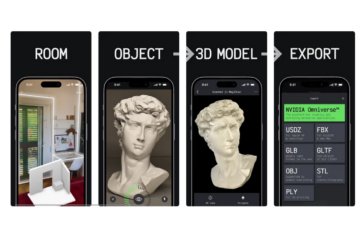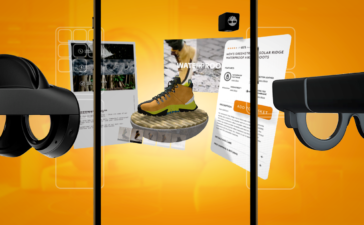MagiScan App Lets Users Create 3D Models With Their Smartphone
As if our smartphones weren’t already incredible enough, startup company AR-Generation is using them to bridge the gap between the real and virtual worlds. With their new cutting-edge app, you can create 3D models with only your smartphone and use them for any AR or metaverse application.
Introducing MagiScan
Meet MagiScan, an AI-powered 3D scanner app that produces high-quality 3D models for any AR or metaverse application. Developed by AR-Generation, a member of the NVIDIA Inception program, MagiScan is the first and only 3D scanner in NVIDIA Omniverse, a real-time 3D graphics collaboration platform.
The MagiScan app, available on both iOS and Android devices, allows users to capture an image of any object using their smartphone camera and quickly generate its detailed 3D model. AR-Feneration co-founder and CEO, Kiryl Sidarchuk, estimates that this process is up to 100 times less expensive and 10 times faster than manual 3D modeling, making it an accessible and user-friendly option for creators. With MagiScan, creators can easily refine their work and increase accessibility to AR technology.

While 3D scanning with smartphones is not new technology, it has significantly improved over the years. In 2015, researchers at Carnegie Mellon University developed a tool for measuring real objects in 3D space using “average” cellphone cameras. They developed their technology to perform accurate measurements so it could be helpful in self-driving cars and virtual shopping for eyeglass frames.
A similar technology was also created in 2021, called the PhotoCatch app, which uses the then-new Apple Object Capture photogrammetry technology.
How MagiScan Works
MagiScan is incredibly easy to use. Simply open the app, scan an object from all angles, and wait for a few seconds for the app to generate a 3D model. Once done, you can export your 3D model in various formats, including STL which allows you to print your model.
In addition to personal use, brands can also use MagiScan for their online platforms. Just enable “Connect MagiScan for Business,” then scan your products and add their 3D models to your website.
Exporting 3D Models Directly to Omniverse
AR-Generation also created an extension allowing MagiScan users to export their 3D models directly to the NVIDIA Omniverse. “We customized our app to allow export of 3D models based on real-world objects directly to Omniverse, enabling users to showcase the models in AR and integrate them into any metaverse or game,” Sidarchuk said.

This extension is made possible by OpenUSD or Universal Scene Description, an open-source software originally developed by Pixar Animation Studios for simulating, describing, composing, and collaborating in the 3D realm. The OpenUSD compatibility is Sidarchuk’s favorite Ominverse feature, and he believes that OpenUSD is the “format of the future.”
The company chose to build an extension for Omniverse because the platform, according to Sidarchuk, “provides a convenient environment that integrates all the tools for working with 3D and generative AI.”
MagiScan and Augmented Reality’s Impact on E-Commerce
The impact of 3D models and AR is not limited to the gaming and metaverse realms. E-commerce businesses can also benefit from the rapid advancements in this technology.
About 60% of online shoppers consider high-quality images a critical factor in their purchasing decisions. To keep up with the competition, brands must provide more than just photos with a white background. They can also display 3D models of their products on their websites or online marketplaces to provide a more immersive browsing experience.
Through MagiScan, AR-Generation believes that conversion rates can increase up to 94%, while returns can drop up to 58%. Crisp and accurate 3D models allow consumers to visualize a product in real life, helping them make more informed purchasing decisions. This may be the same reason why Carnegie Mellon University researchers developed their 3D scanner to aid people in buying eyeglass frames online.
The Growing Significance of AR in Daily Life
Sidarchuk believes that AR will become an integral part of everyday life. And it’s not hard to see why. AR has grown in popularity over the years and is now widely used in various industries, from gaming to shopping to employee training. With AR, individuals and corporations can experience immersive virtual environments in a safe and secure way.
Thanks to advancements in technology, high-quality 3D experiences are now possible on smartphones. This means that AR and the Omniverse have the potential to impact even the most mundane activities of our daily lives. With this in mind, it’s clear that AR technology is here to stay.
MagiScan App Lets Users Create 3D Models With Their Smartphone Read More »



